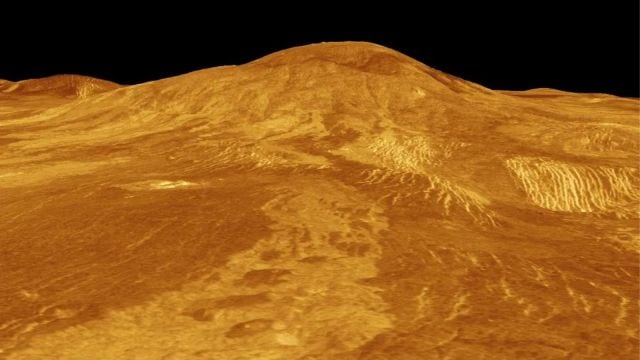Venus, the closest Earth-like planet in our solar system, is known for its thousands of volcanoes. Recent studies suggest that some of these volcanoes may still be active. This conclusion is based on new geographical evidence observed by scientists in Italy working with NASA.
Evidence from NASA’s Magellan Mission
- Archived Data Analysis: Scientists analyzed data from NASA’s Magellan mission, which mapped Venus’ surface between 1990 and 1994.
- Lava Flows Observed: New lava flows were detected, indicating volcanic activity between 1990 and 1992.
Overview of NASA’s Magellan Mission
- Mission Timeline: The Magellan spacecraft reached Venus in 1990 and provided comprehensive surface mapping before disintegrating in Venus’ atmosphere on October 12, 1994.
- Subsequent Research: Since Magellan, no other spacecraft has explored Venus.
Specific Findings
- Volcanic Activity Detection: Using new instruments, scientists identified new lava flows on the western flank of the Sif Mons volcano and the western part of Niobe Planitia, confirming recent volcanic activity.
- Previous Observations: Earlier studies also noted changes in a volcanic vent’s shape and size, supporting the idea of ongoing volcanic activity.
Scientific Implications
- Comparative Volcanism: Davide Sulcanese of d’Annunzio University in Pescara, Italy, highlighted that Venus’s volcanic activity might be comparable to Earth’s.
- Planetary Studies: Active volcanoes provide insights into how a planet’s interior affects its crust and potential habitability.
Future Exploration
- VERITAS Mission: In 2031, NASA plans to launch the VERITAS mission to Venus. This mission aims to study Venus’s surface and core, helping to understand why Venus evolved differently from Earth despite their similar sizes.
Multiple Choice Questions (MCQs):
- What recent evidence suggests that Venus may still have active volcanoes?
- A) Observation of atmospheric changes
- B) Discovery of new lava flows
- C) Detection of seismic activity
- D) Increase in surface temperature
- When did NASA’s Magellan mission reach Venus?
- A) 1985
- B) 1990
- C) 1995
- D) 2000
- What significant feature of the Sif Mons volcano was observed in the recent study?
- A) Formation of a new crater
- B) Eruption of ash clouds
- C) Presence of new lava flows
- D) Increase in height
- What is the name of NASA’s upcoming mission to Venus planned for 2031?
- A) Venera
- B) Pioneer
- C) VERITAS
- D) Galileo
- Why is studying active volcanoes on Venus important for scientists?
- A) To find new mineral resources
- B) To understand planetary habitability and crust dynamics
- C) To locate potential landing sites for future missions
- D) To compare weather patterns with Earth
